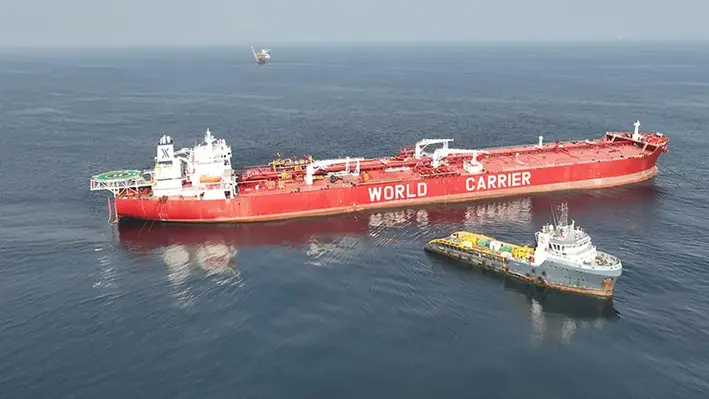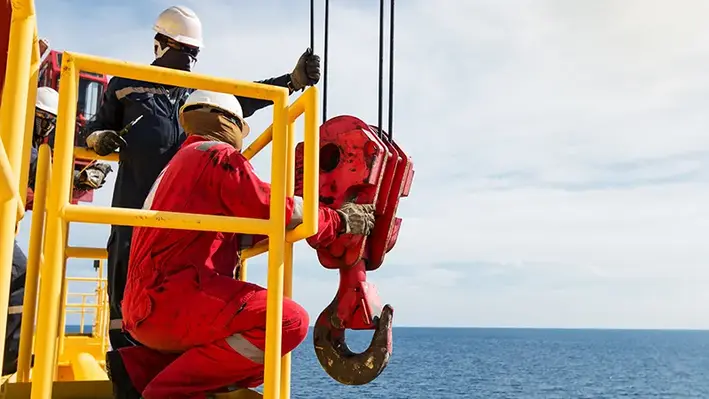 On day three of OWI APAC, attention turned to optimising production enhancement strategies as host Sohan Harkesh Singh, Asset Performance Solution Commercial Manager – Asia, Schlumberger, was joined by representatives from EnQuest and South East Asia Hibiscus to consider the best way to capture value from this “low hanging fruit”.
On day three of OWI APAC, attention turned to optimising production enhancement strategies as host Sohan Harkesh Singh, Asset Performance Solution Commercial Manager – Asia, Schlumberger, was joined by representatives from EnQuest and South East Asia Hibiscus to consider the best way to capture value from this “low hanging fruit”.
As the panellists agreed it was critical to have an efficient workflow for any production enhancement programme, Khairul Riza bin Zainul Riza, Well Services Engineer, Hibiscus, took the opportunity to explain the process at his company whereupon they split intervention into two – routine and non-routine. The first, routine, is slickline only which is being worked 365 days a year. There is an overall plan of when work should be starting but it is updated as they go along when new opportunities are identified which can slot into the sequence. Such dynamic processes can help save time as if an opportunity to implement a solution can be identified with crew currently working on a remote jacket, turnaround will be much faster than if they need to return to it at a later date.
Non-routine, as Riza continued, is for more complex well entry and typically involves some sort of support vessel with a crane. This is for anything beyond slickline such as coil tubing. Planning is done far in advance (6-8 months) with opportunities continually identified for the following year.
Mohd Farid Mohd Talib, Wells Engineer, EnQuest, said that his company had an almost similar workflow to cater for most of the 362 strings in the Seligi field with OSV throughout the year where the team works in integrated systems between Subsurface, Ptech, Wells Team and also the Operation department. This process is started from a field reservoir workshop a year in advance to develop initial IWR target inventories by applying efficiency on online integrated system Well Request Forms (WRF). Farid noted it was vital to monitor large well inventories as much as possible to consider whether they were in a first time, routine, non-routine, easy to moderate, complex or very complex requirement of intervention. The company assesses what they can gain from intervening on categories of production enhancement/idle well recoveries (PE/IWR), data acquisition (DA) and also well integrity (WI) issues with the intention to protect the baseline of EnQuest within approved UEC (cost allocated) and overall chance of success (CoS) as well as justifying their well plan throughout the year to meet on the annual production KPI target.
Sohan added, “We have dedicated production enhancement workflows and we try to do this in an integrated fashion. We try to engage with the operator from the start to ensure there is alignment on delivery as this is very important and try to use digital technology where possible to help us deliver overall solutions much quicker. In some examples, digital workflows can fast track workflows by 90%.”
Production enhancement challenges
Turning to the challenges and inhibitors of production enhancement, Riza noted that in North Sabah, where some Hibiscus assets are located, one of the biggest difficulties is actually bad weather which comes round twice a year (mid and end). This can make activity planning extremely difficult with limited periods for operations. This is combined with the fact that resources must be shared with other departments internally, such as crew, living quarters, supply vessels etc. Such problems highlight the importance of dedicated and efficient workflows even more.
The panellists also noted that well intervention activities have been severely limited by the occurrence of oil price drops which can disrupt the economic planning. Farid said, “Right now it is not economical for us to have E-line at the moment so we are opting instead to optimise the services of the IIWR/IWS integrated contract for coil tubing and slickline. We have managed to use it to fulfil all our objectives without neglecting on company annual barrel gain KPI targets. With this we perform on our objectives to redo baselines, check on adhoc active well requirements, perform our yearly well intervention campaign for PE/IWR and DA, and also perform well repairs for WI, etc. This strategy has allowed EnQuest to achieve on its targets for top efficiency, fast turnaround and allows for cost optimisation to deplete remaining reserves.”
Riza agreed and added that Hibiscus has had to scale down plans quite a bit as well as deferring campaigns (such as a coil tubing from last year to this). His company, too, has noted that E-line is no longer economic and has instead turned to performing operations with memory tools and performing perforation jobs on slickline instead. Yet, despite this, they have encountered a fair bit of success with reworked campaigns, such as three fishing jobs which were successfully completed recently, two of the aforementioned perforation jobs and two saturation logging jobs. There is one more perforation job planned for this year after saturation logging results were received last year.
Best practices and new technology
Sohan switched the conversation by asking the panellists to explain the best practices for carrying out production enhancement, especially in the challenging times the industry is going through. For his part, he said, “Schlumberger is increasingly being more focused on the development of new digital technology as enablers for production enhancement. You may be familiar with the buzz word WPO [well portfolio optimiser] which we have designed to improve production enhancement workflows to reduce time take for data gathering to selecting & ranking well candidates. This allowed a client to reduce the time taken to rank their candidates from four months to two weeks.”
Sohan also focused on new technology providing real time surveillance, powerful analytics and more which allow for predictive insights to help make better, more informed decisions. Farid added that at EnQuest, they are always open to trying new technologies and opportunities to perform more efficient well operations as long as they are economically viable, before opting for workover or drilling options, and have sharing benefits to develop more knowledge between all parties involved. They encourage and challenge contractors to become the leaders of the job, sharing KPI achievements on subsurface proven alignments mechanisms and sharing their technical expertise with the EnQuest crew so that they can perform better on the solution in the future. EnQuest is also always looking forward in order to share their experience for proven and clear direction on integrated workflows (IIWR/IWS) and for technical solution sharing on new technology for man-made gas shut offs that have been planned for the first time in the world.
Riza said, “One thing we do well is achieve cost saving through sharing resources via integrated planning with other departments. When one of them needs an additional vessel (such as a supply vessel), we look at what campaigns everyone has going on to see if we can share it out so we each do not have to acquire one separately.”
“Also, early planning and preparation is critical. We plan 6-8 months in advance for heavier activities. That is key to achieving most of our targets. It allows us to communicate up front early our entire annual plan to contractors so that they can align their resources in a timely manner to our requirements. In that way no one is caught off guard.”
The panellists also touched upon other best practices such as adapting multi-skilled personnel. For instance, at Hibiscus a slickline equipment mechanic is routinely mobilised to service and check the slickline equipment offshore but now they are multi-skilled as a slickline assistant also so they can form part of the slickline operating team. Not only does this save value but also reduces the need for additional people to be mobilised, which is especially important during Covid-19.
To hear more from the panellists including further discussion on best practices and procurement models, follow the link below:
https://www.youtube.com/watch?v=QMZvLeiv5p4




